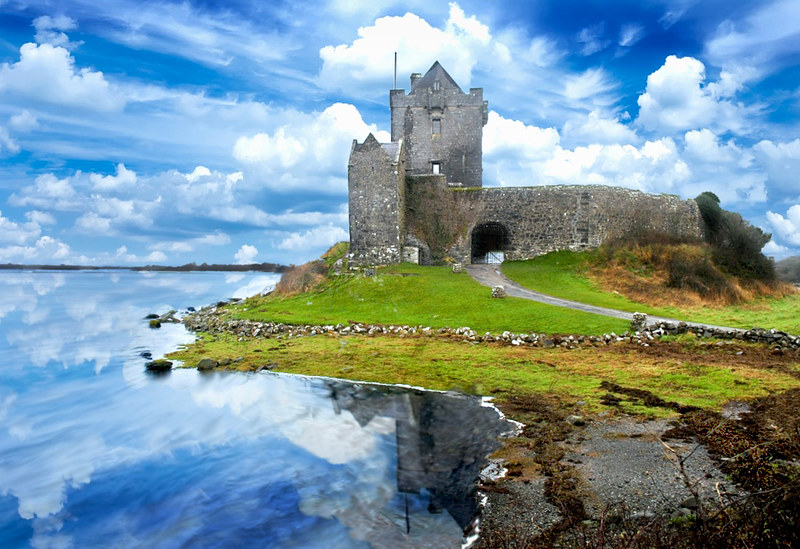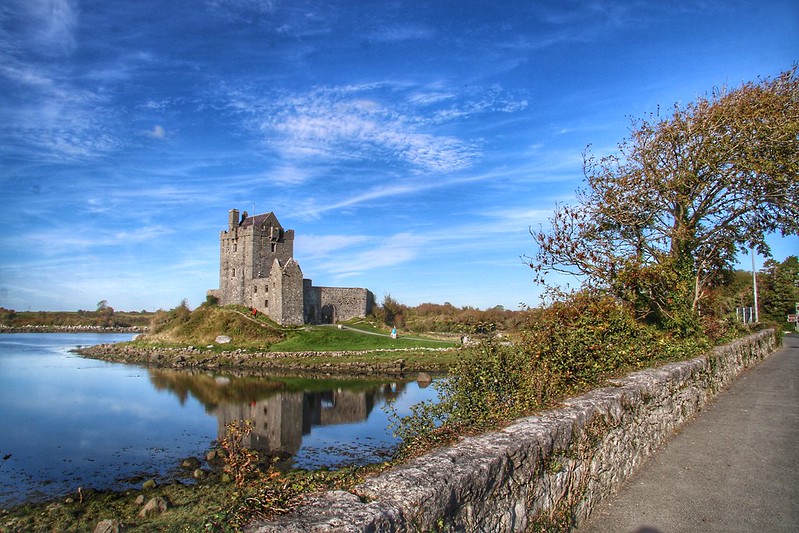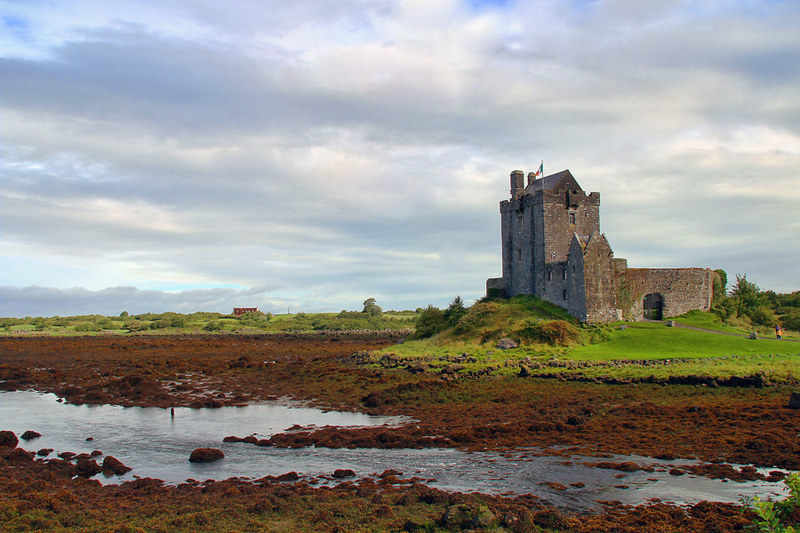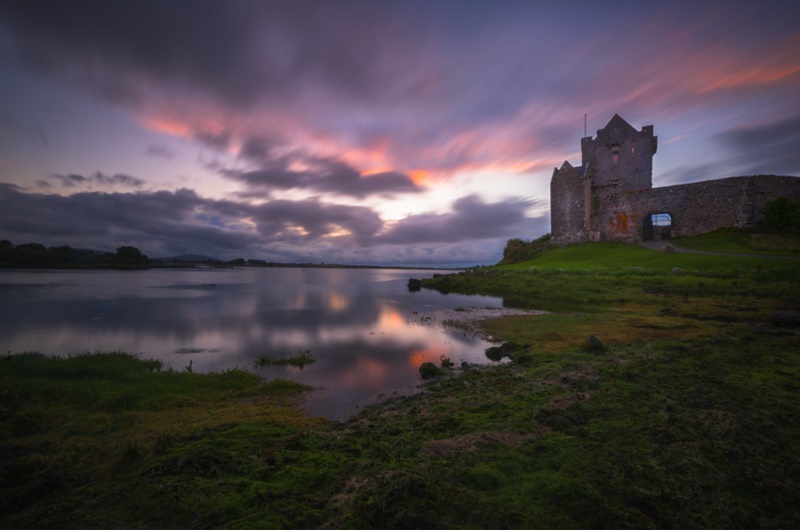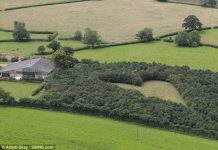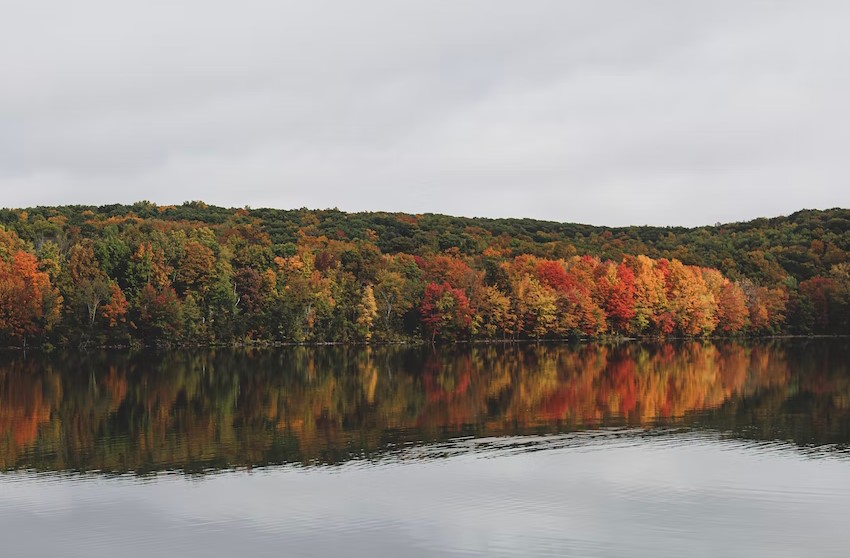Dunguaire Castle, or Dún Guaire, is a 16th-century tower house on the southeastern side of Galway Bay in County Galway, Ireland, near Kinvara. The literary renaissance in Ireland during the early 1900s was centered around Dunguaire Castle and its historical background. The castle name refers to ruler Guaire, the legendary ruler of Connacht, and his dun (fort).
Originally, it protected one of the most influential families in the area on defense. The Dunguaire castle’s 75-foot tower and evasive wall have been repaired, and the grounds are open to visitors in the summer. The O’Hynes clan constructed Dunguaire Castle around 1520 on the scenic shores of Galway Bay. During Ireland’s turbulent medieval era, the castle was a crucial center of power because of its advantageous location, which gave the O’Hynes access to the bountiful regions surrounding Galway Bay.
The comparatively modest Dunguaire Castle was constructed in the manner of an Irish tower house. A bawn, or external curtain wall, encloses a courtyard as well. The bawn served more as a cattle containment device than a defensive tool. Additionally, the building has a towerlet or guard chamber located in the southwest corner of the courtyard. The robust battlemented walls made of limestone bear witness to the skill of medieval Irish artisans. The castle is a remarkable example of Gaelic tower house architecture because of its unusual blend of residential apartments and military defense.
Dunguaire Castle was being used in the 1969 Walt Disney film “Guns in the Heather,” when it was known as Boyne Castle. It was also the Scottish castle that housed the primary protagonist in the 1979 film “North Sea Hijack.”.
In Ireland, Dunguaire Castle is the most photographed castle due to its stunning setting! The Dunguaire Castle is a distinctive viewpoint for photographing for untamed natural splendor. This composition is distinctly Irish, with its blend of old stone walls, undulating terrain, and the serene seas of Galway Bay. The castle’s reflection in the harbor draws a lot of photographers since it creates a mirrored image that heightens its charm.
Visitors are able to reserve a banquet that includes a four-course meal and entertainment; this option is available from April to October. It takes around an hour or two to visit the Dunguaire Castle. If visitors decide to come back for a banquet meal in the evening, they should definitely check out the charming fishing village of Kinvara. It is also close enough to Bunratty Castle to visit that same day. Another highlight is the Burren National Park, which is only a short drive from Dunguaire and is known for its rich biodiversity and distinctive limestone scenery.
Dungauaire Castle History
We explore its cultural significance, beautiful scenery, and rich history to learn why it is so dear to the hearts of those who come here. In the 17th century, Dunguaire Castle was acquired by the Martyns of Galway. Richard Martyn, Mayor of Galway, lived at the castle until 1642.
According to 19th century Gaelic scholar John O’Donovan’s Ordnance Survey letters for County Galway and his book, The Genealogies, Tribes, and Customs of the Hy-Fiachrach, Dunguaire was built by the Ó hEidhin (Hynes) clan, chiefs of Coill Ua bhFiachrach, the district around Kinvara, and also of Uí Fiachrach Aidhne, an area coextensive with the diocese of Kilmacduagh covering the part of County Galway between the Burren and Galway Bay to the west and Slieve Aughty.
A well-known author named Oliver St. John Gotary bought Dunguaire Castle in 1924 and repaired it afterwards. Irish literature saw a massive Celtic Renaissance during this period. As a result, Dunguaire Castle started to become a well-liked location for literary revivalists like Synge, W.B. Yates, George Bernard Shaw, and O’Casey to gather.
After Oliver St. John’s initial repair efforts were finished, Christopher Lady Amptill acquired the castle in 1954. Dunguaire Castle is a magnificent remnant of 16th-century living. Now it is looked after by Shannon Development. A real gem of Ireland, Dunguaire Castle combines history, architecture, scenic beauty, and cultural relevance.
Read More: The Cliffs of Moher Ireland
